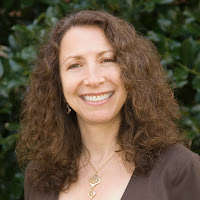When I started this interview series earlier this year, I envisioned getting a peek into the lives of some of the creative women I am surrounded by virtually.
And while I did this and shared them with you, I always thought about what my own answers would be. So here they are:
1. What does creativity mean to you?
What creativity means has changed and evolved for me over the years. When I first started thinking about creativity in high school and college, I assumed it was something I didn’t have. So I spent my time admiring it in others, also known as studying art history! It wasn’t until later, while working as an educator at a museum when my boss told me, “to just be creative,” on a project that it hit me. That statement stunted me, because I did not know what that was. After that, I began to really study creativity (mine and others).
So today, creativity means to me a connection of new ideas to make something that moves us forward somehow, whether it is spiritually, personally or professionally.
2. What is your creative process and what tools do you use to stimulate it?
Since I am an introvert, my creative process involves A LOT of internal musings. It usually starts with me being in a quiet place, which could be in nature, bed or even the shower. These are places where I do my best thinking. Once I get the initial idea to create, I usually run with it from there.
For instance, if I am designing something, it usually starts with an idea. Then I try to tie a theme or process to it. I am very big on connections and am always thinking about how things relate to one another.
3. What is your most creative time of day?
First of all, let me say that I put this question in because of a blog post I wrote about this a couple of years ago. I was curious to see if there was any connection between the time of day and when people were most creative. There turned out to be none.
4. How do you infuse creativity into your daily life and tasks?
After completing Eric Maisel’s The Creativity Book, I’ve become more attuned to being everyday creative. For me that doesn’t mean simply doing something artistic but living my life creatively. This might mean taking a new route to work, eating a new food or even getting up on the opposite side of the bed. Anything that I can do to create synergy, I try. I also do simple things like improvise a new recipe, mix up my wardrobe with different colors and patterns, and decorate my planner with images.
5. What creative tip or resource would you like to share with our readers?
Over the years, I’ve definitely shared with you a lot of my personal tips. That’s why my best resource is also the one I subscribe to the most and those are my Top Ten Creative Cures. There’s bound to be a tip in there that will ignite some sort of creative spark within you.
- Happy Creating!




